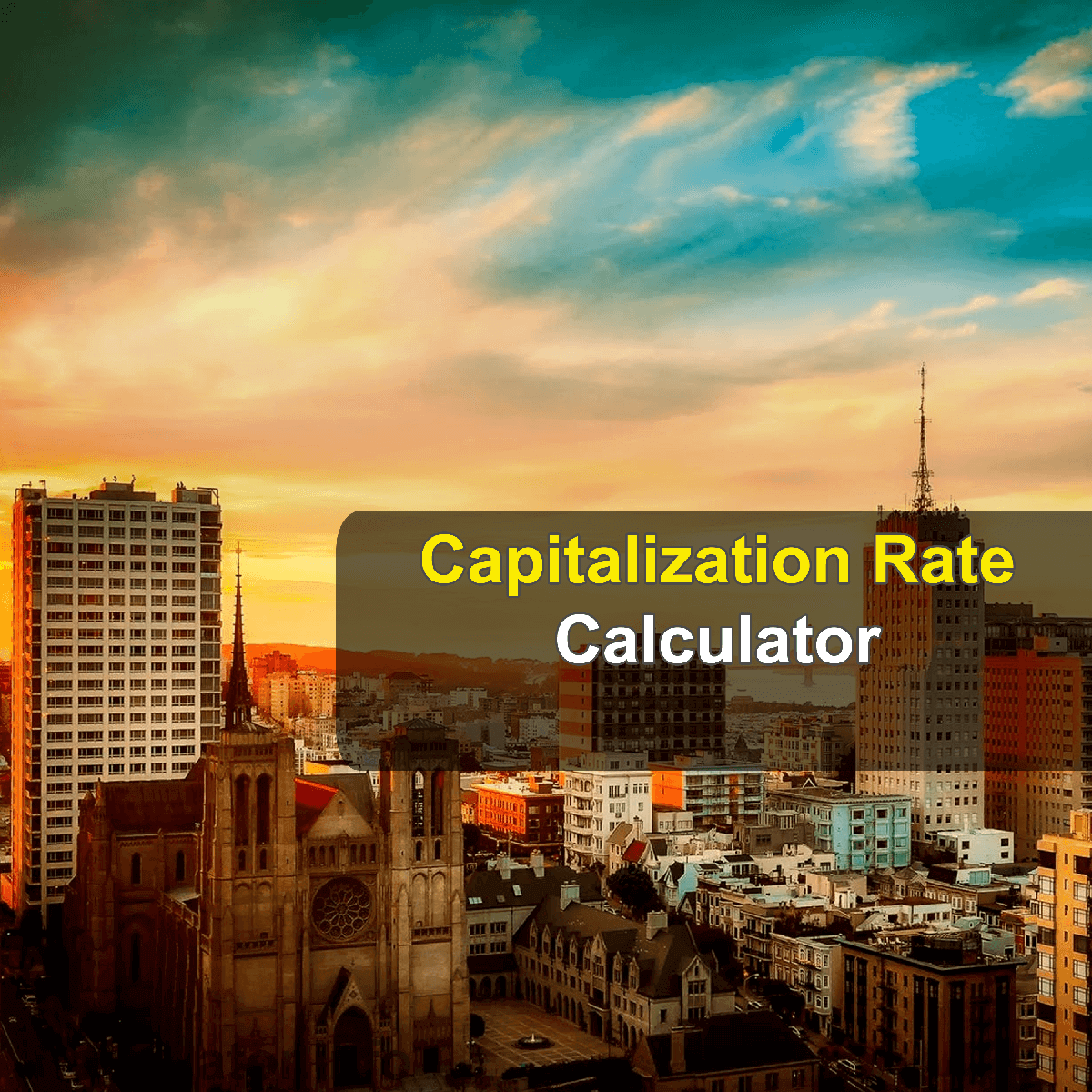Menu
Capitalization Rate Calculator
Calculate the Capitalization rate (Cap Rate) based on the value of a property and the income recieved from renting the property.
| Purchase Price: | |
| Gross Rental Income: | |
| Vacancy Rate %: | |
| Operating Expenses: |
Please provide a rating, it takes seconds and helps us to keep this resource free for all to use
Calculate Rate of Return on your Real Estate Investments Using Capitalization Rate
Investing in real estate has always been lucrative, especially investing in commercial properties as it generates a good rental income. Capitalization rate, also known as Cap rate is a method to determine the approximate rate of return that is to be generated on real estate investments.
Cap rate is the most popular method to assess the profitability of real estate investments. It is most useful for comparing the returns on investments that are earned by similar real estate properties.
The Cap Rate Calculator
The cap rate calculator shows you the rate as a percentage that your property can earn in a given period of time. The base formula for cap rate calculations is stated below:
To calculate cap rate, first you need to calculate the net operating income (NOI):
However, the calculator makes it easier for you to get into the calculations as it gives you the quickest possible results with the input of simple values, like.

- Purchase Price: Here, the current value of your property needs to be entered.
- Gross rental Income: This refers to the total amount of income that you generate from the property in question. e.g. if you are calculating for a year, input yearly rental income.
- Vacancy Rate: Here, you must enter the percentage of times that your property remains vacant in that particular period of time. For example, if you are calculating for a year and you are expecting the property to remain vacant for at least 3 months, you can enter 25%.
- Operating expenses: This is the total amount that you are expecting to spend on operating the property for that particular period of time.
On the basis of inputs made by you, the calculator will show you the estimated yield on your investment.
Benefits of using the calculator
Using Cap rate calculator can really help you make better decisions for your real estate investments. Let's see how it can help:
- Existing property: It will show you how much you are profiting by renting your existing property.
- Buying new properties: Also, you can use it for making new investments in real estate.
- Comparison: You can make comparisons on returns from your different investments or properties of others, given the investments are on similar kind of real estate.
- Save time: The calculator is free, online and easy to use. So saves you a lot of time (and stress).
When to use the cap rate
Cap rate should ideally be used prior to purchase of a property. This is typically used by both, landlords and investors who purchase real estate to hold and sell. However, it also makes sense to calculate cap rate if the property is currently rented. The method can be used for:
- Commercial real estate investments.
- Single family investment properties.
- Condo or townhouses.
- Apartments/ Residential buildings.
When not to use cap rate
There are many scenarios where the cap rate method is appropriate. However, there are situations where you shouldn't use this method:
- Vacant property: The cap rate formula majorly depends on net operating income (NOI) as explained above. When the property is vacant or not rented, there will be no scope of finding out the NOI thus making the calculations inaccurate.
- Investments in land: When you purchase a land it is vacant and has no rental income. So using the cap rate method will not be appropriate here.
- Fix and sell: If you are planning to buy some property just for resale purposes after fixing, this formula would not be useful.
- Purchasing a vacation or short term property: These types of properties do not have year round rental income. They stay unoccupied for different periods so calculating NOI and ultimately cap rate would be inappropriate.
A good cap rate
Cap rates are based on the projected estimates of rental returns. This makes them highly variant. In general terms the higher the cap rate the higher the profits. Buyers generally want high cap rates. This means lower property rates and high rental income. However, higher cap rate also means higher risks.
An investor needs to weigh in the risk before making any big investments. A property with high cap rate may take expected rates instead of actual occupancy rate. There is also a possibility of the property having a lower cap rate, but the property could be in an expensive area etc. which will make it beneficial in other ways. To get a clear picture of your real estate investment ascertain first how the cap rate was derived.
Finance Calculators
You may also find the following Finance calculators useful.
- Bid Ask Calculator
- Debt To Income Calculator
- Prorated Rent Calculator
- Debt Service Coverage Ratio Calculator
- Accounting Rate Of Return Calculator
- Simple Pay Rise Calculator
- Creditline Transfer Apr Calculator
- Annual Loan Repayment Calculator
- Amortization Schedule Calculator
- Discounted Payback Period Calculator
- Death Benefit Provident Fund Calculator
- Bike Emi Calculator
- Book Value Per Common Share Calculator
- Present Value Of A Future Sum Calculator
- Net Worth Calculator
- Present Value Of Cash Flows Calculator
- Logbook Loan Calculator
- Early Repayment Loan Calculator
- Debtor Days Calculator
- Profit Calculator